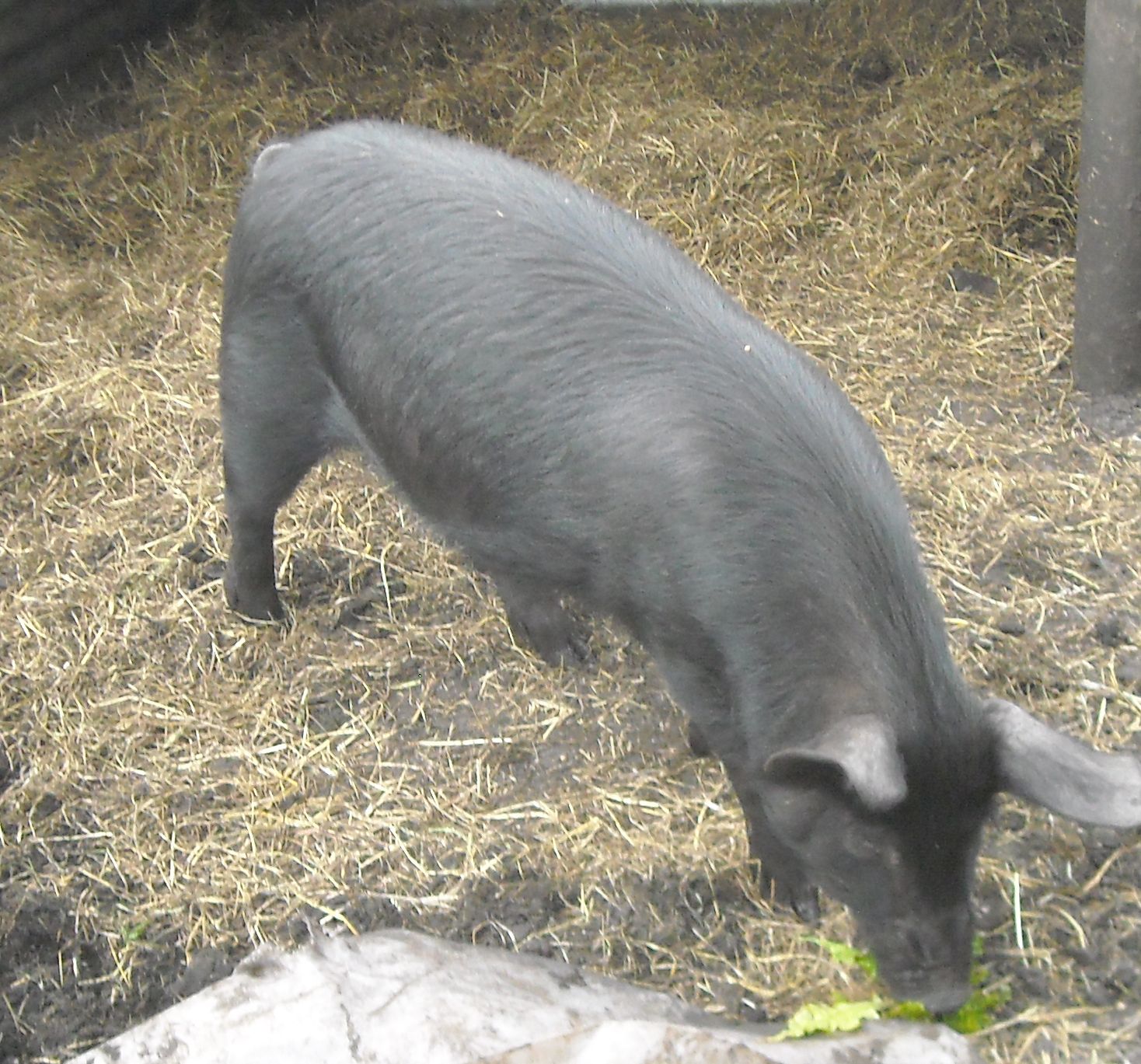
I’ve been making sausages for the better part of the morning. There is some pig that can’t easily become ham or bacon. As a wannabe writer: If you figure the cost of writer’s workshops or MFA degrees in creative writing… there’s a lot to be said for learning how to make sausages. At the end of the process you at least have sausages. And oddly you will have learned quite a lot of value, and some of it applies to writing as well as sausages.
To the sausage eater, well, a sausage is a sausage. Some better, some wurst, but a thing in itself. The eater probably doesn’t think too closely about what went into it. In the case of Dibbler’s sausages that is probably just as well, but it is almost certainly organic. And it probably helps to be drunk and have it with ketchup and mustard. Now isn’t that true of a lot of books? There are a good few that ketchup and mustard could improve.
From the writer’s point of view: the ingredients that go into s book are quite distinct, and ‘taste’ noting like the end product. And, yes, actually it is much easier to make good (or fantastic) sausage with great ingredients. The same is true of books. And likewise, a book probably fails even if those are best ingredients in the world… if they remain themselves and do not form part of the whole. Just as fresh garlic – where all you can taste is garlic and not the blend of meat, fat and salt makes a lousy sausage, so too a book where one of the elements so overwhelms the rest it’s just that. Balance is everything and final product is more and different than merely its parts. A master can even add in that touch of sweetness (apple, cranberries, sun-dried tomato) – which lifts the sausage into the sublime (and sweet in sausage is the easiest pat to screw up – the same as books). And yes, a skilled blender can make un-named dodgy meat into a pretty acceptable sausage – just as skilled writer can turn iffy material into a readable book… but are you that sausage maker? Or that writer? I am not.
There are myriad sausage recipes. Sausage made of everything from bear to squirrel, pork to beef, turkey to fish. Even vegan. Sausages with everything from cranberries to chardonnay in them. But oddly they have two essential ingredients, in essential proportions. Stray too far from either and your sausage doesn’t work. And those are fat and salt. Not the obvious – people say it’s a bear or boar or chicken sausage. They don’t say ‘it’s a fat sausage’. “Yuck!” would be the response. And indeed yuck is appropriate if you don’t get that proportion (around 20%) right. Too much and it becomes a greasy horrible thing. By the time it cooks out the sausage meat and other ingredients taste greasy and overcooked. And too little and it is dry and tasteless. Vegan is particularly difficult because of the whole ‘fat’ thing. I gather it’s considered bad to suggest using plump ones. But I gather one can buy vegan suet.
For me, in writing, that’s the story, the action, the adventure. In some shape or form it has to be in every worthwhile read. Yes, actually you can have too much. Or too little, and vast focus on the other ingredients – be they the setting or the social justice outrage of the week – they tend to dry and un-appealing. And the salt… well those are the characters. And yes, once again there is such a thing as too much – or too bland when it is merely count the pre-expected tokens. I wait with amusement for the first orange haired villain s to appear…
Oddly, in sausages, the fat is the hard part to handle. It clags up your mincer, won’t go through without careful handling. The meat or fowl – no matter what they are, are easy. The onion – if you use it– might make you cry, but it’s not hard to deal with. The fat… it has to be pretty close to frozen to mince well. The same is true in writing. That essential ‘carrier’ is the hard part to write well. Any dam fool can write the rest. Even the bits which make you cry.
Now for most sausages the texture is fine. It’s not essential, but actually there is a reason for it being successful and thus popular, and that comes back to the fat and the salt. Mixing the ingredients is vital – mixing them well. Commonly the mix is put through the mincer a second time, after a very vigorous mixing. And isn’t that true of novels too: large chunks of unmixed say description, or angst, or even action make the book less of a pleasure. Hard going. Yes, even it is the right amount, and it’ll all mix in your head, eventually. That’s like telling me the sausage will all mix in my stomach. That’s not where I want it to mix.
Once made, mixed and cooked a sample and tasted and adjusted your sausage filling (yes, just like books they require some adjustment) comes the part about getting it into a sausage. Ahem. In order to illustrate this I need you to remember – the casing is gut (or fake-gut). It’s been inverted, scrubbed, salted… and now is in 7 yard lengths. Now as a trivial detail, when bought in bulk (as I do) you’ve got maybe 20 seven yard lengths attached to one plastic ring to bind and bring the sausageer into darkness, and depair. The skein of skins is quite a job. If you can climb a seven yard ladder… (yes I tried that) and dangle and shake… no it takes patience, care and perseverance. And then when you have your gut (or story) all untangled you fill it with water and check for holes. In novels those can be fixed. In sausages you knot off and start again.
Then you do a sort of reverse condom – getting 7 yards onto six inches of spout. You push a little of your mix through the spout, and tie off. If you don’t do this you get a fat bubble of nothing – well air, as your first sausage. And that is the mistake all too many writers make – they have a great mixture in the sausage machine (well their heads as the story. But they start with a big wodge of nothing. In sausages that makes gat go rancid. In books it makes the reader go rancid about the book.
And then it’s a question of pace. You can’t actually fill the sausage skin to bursting because 1) they do burst, and 2) you still need to form links. You’ve got to feed mix into the maw of the the machine and control the gut flowing off the spout. And it all happens way too fast, and as an amateur, the disasters can be both spectacular and messy. Trust me and my ceiling on this. And if you can’t see how this is rather like writing, I despair of you.
At the end… a sausage is a linear thing. It has a beginning and an end, it is constrained by the gut. Yes, you form it into links, but a sausage isn’t made in links – any more than a book is. It’s made as a whole sausage. Chapters shape it.
With all of this: practice makes you better and it easier. It doesn’t get ‘easy’ (I’ve made 250 pounds of sausage in one single stint – and many smaller batches). It just gets a little easier. Yes, when you look back… well you’ve come a long way (especially with twisting the links – it used to take me hours to do one string.). I’ve come on yards and yards and yards since then, in fact. Just like writing.
Now, I have about 50 more pounds of sausage to make tomorrow. Just think how being my assistant could help your writing career…
No, actually my name is not Tom Sawyer. It’s Dave Freer. But when we’ve finished on sausages I have a picket fence that needs whitewashing…




57 responses to “Making Sausage”
Dave, you’ve managed to make me want some nice, delicious Longganisa. Or a nice, fat, salty bratwurst, the way I used to have them back in East Berlin.
After I’ve already eaten, too!
Sort of on topic, I’ve wondered if sausage makes good traveler’s food. I figure, a salami-like thing, or thin salami-like sausages, might. Part of the random little wonderings I do, to season stories with little details…
The preserved – airdried (or smoked)and with Prague powder no 2 do make good travelling food – no need for a fridge, lots of calories.:-)
I am making boerewors tomorrow. I made some ordinary snags today. Will do some chorizo-style tomorrow. I’ve done some of the salami type dried and fermented sausage in the past but it’s a bit more tricky.
Prague powder no 2 contains sodium nitrate, which slow,y breaks down into sodium nitrite – which restricts the nasty bugs
Was going to mention the bacteria that makes the toxin that causes botulism was discovered in sausages, hence, the name.
This brought back a memory: My parents used to make their own sausage, but I only remember the last. No disaster or humor. After getting everything ready, they discovered their grinder was flaking finish. Not a good thing for food. So that one ended before it began.
Another memory: A trip to the abattoir’s and watching them make sausage from the hog we had butchered. Fascinating.
We favored a caseless sausage as nothing more than a matter of taste. These were made into patties and wrapped along with the other meat. The modern patty sausages are anemic little things in comparison. And oh, how they were good on a cold morning.
We had caseless sausage last night for our tea (what they call supper or dinner here) 🙂 Done right, they’re very good.
I tried making caseless longganisa when we were in Townsville (because I couldn’t source it with any ease then) but I couldn’t figure out how to store it. (tried in freezer, and they eventually stuck to the paper and went freezer-burned.
Was tasty though.
Bratwurst mit broetchen. And a krystalweizen to wash it down.
I guess the right bread and beer for a particular sausage are probably metaphors for something.
Well met, four please. 🙂
Landjager is a dried, smoked German sausage that is the old (from 1945 back to the 1500s) german army’s version of jerky. Much better (and I LIKE jerky) and better for you. It’s my on the trail hunting sausage of choice, but a pain in the ass to make. the ingredients are easy, the curing is harder…
I have just recently discovered landjaeger 🙂 Wonderful stuff! And it just so happens there’s a local butcher shop that not only makes it, but sells it on Amazon… It makes doing low carb travel meals MUCH easier!
Link, bitte?
Aber natürlich! https://www.amazon.com/Landjaeger-German-Sausage-12pk-6x2pks/dp/B00A70X5AK/ref=sr_ph_1_a_it?ie=UTF8&qid=1479148880&sr=sr-1&keywords=landjaeger+german+sausage
ah yes, they’re local for me
Vielen dank!
If nothing else it’ll give me an idea of what they look like.
Taste, on the other hand… ^^;
Danke schon. Ordered.
I did salami last year – it worked but it’s a PITA to make (temperature and humidity need to be controlled quite precisely) and I decided that for anything short of a large batch (high risk for a guy dependent on this for his food) it’s not worth setting up the necessary humidor and thermostat to make it reliable and drop the risk. We don’t eat that much salami. Which is kind of like books too: – that special product may be nice but if the chances are good it might go wrong and you need the income…
yup. I’ve got a friend now that wants to mess with it too, at a big enough “co-op”level I might bother, for smaller batches, not worth it.
You can get pig’s blood? Try this:
http://finnishfoodgirl.com/2013/10/finnish-black-sausage-mustamakkara/
Shadow, since I started going to LibertyCon (the only real traveling I do right now), I have been carrying a dry sausage of one variety or another, and a loaf of either French or Italian bread for both lunch on the road, and early food before leaving the hotel room. It doesn’t take much to give you enough fuel to last until lunchtime.
Wish i had brought that with me today
I used to buy air dried sausage and bread when I did Interrail trips in the 80’s (back then I still could eat bread without problems). Good enough meal for longer train trips, and cheaper (also often tastier) than buying what was offered in the train. Vichy, or sometimes wine, for drink.
Great analogy, and topical for me right now. Deer season just opened in Missouri (I had the OMG phone over the weekend because everyone senior to me is out in the woods, stalking Bambi). And when the mighty hunters return from the wild they will stop at the local butcher shop with their deer and I can usually count on getting some sausage and maybe a couple of steaks if anyone did particularly well. I personally don’t hunt because one of my eyes is mostly decorative and I can’t hit anything farther than arm’s length away.
In any event, I think you’re right, the mix of action to exposition in fiction is very important, and hard to get right. Too much of the former and the audience doesn’t care enough about the characters to be moved by the action, too much of the later and you put your readers to sleep.
“The OMG Phone” That’s great.
You know what I mean, right?
I haven’t manned it myself, but I have worked with several who have. So yes, definitely.
“the mix of action to exposition in fiction is very important, and hard to get right.” This. And it’s something you can’t learn by recipe – authors either have a feel for it, or not. This where it is art, not science.
Check your Fish and Game, as it’s a by state thing, but here in Idaho we can salvage road kill deer and file a salvage tag online (or on the phone, or in person).
As long as you wait for someone else to wreck their car (don’t wreck your own!), you can usually get a good three-quarters of a deer for merely the work of cleaning and butchering it. Fawn’s pretty nice, and it’s the only legal way to harvest them. The deer currently in our freezer stuck just her head out in front of a car, and we ended up with all the meat except the tongue being usable, and she was a big gal, took up a couple shelves after butchering.
It’s not that I wouldn’t hunt, it’s just that I’m too darned busy, and dang it, this is pretty much walk out the door and pick them up level of easy, 100% success rate, no season, limit one per person of hunting age per household per year . . .
I’m not sure the exact rules here, but I just got one by having an injured one put down. The deputy asked if I knew anyone who would want it, and I said sure. But I forgot to get a disposal tag from him (don’t know if you can apply for one that is just killed outright, but probably), so I’m butchering it myself instead of being able to take it to a professional processor (I really don’t know anything about butchering animals).
So long as you got the blood out and gut out unbroken, the rest is pretty much just follow the joints with your knife. If you have a clean hand-wood saw, they work pretty well on bone. Splitting down the spine with the saw -if you can hang it is best – is best in my experience. It’s just easier to handle.
We hung deer by the antlers or by the legs, running the singletree through the leader at the ankles. By the antlers seemed to work best. Due to Chronic Wasting Disease in the US, here it’s now recommended to bone out the meat to avoid cutting bone. Having not so much as helped clean a deer since CWD showed up in the US, that sounds, ah, interesting. Maybe it’s not as bad a job as it sounds.
Due to mobility issues I no longer hunt myself. Still, my freezer has lots of those lovely white packets of paper wrapped meat, both venison and elk. And several still of those one pound plastic chub packs of deer/pork sausage. Had a few nice slabs of boar bacon, but they seem to have somehow evaporated.
You see, I’ve been a reloader for going on fifty years now. A number of friends come over with purchased components, we sit and discuss precisely what they need the ammunition to do for them, then we put together loaded cartridges for both hunting and target practice. Their components, my equipment and expertise, and no money ever changes hands. And every so often they stop by with a large grocery sack filled with lovely packets of protein.
One good dear friend will be taking his father on an American Bison hunt later this year. I’ve already been told to clear a large space in the chest freezer.
c4c
Why is the name Bismark coming to mind? 🙂
I think he was wrong. Its better to be aware of the steps involved in sausage making and law making (and story makinng).
However I’m sure that the key to a successful end product is that it looks like it was made effortlessly without all the intermediate steps showing
Indeed. the end user should (and if you did it right, is) unaware of what the process was, or the orginal ingredients tasted like on their own. It’s effortless to eat/read.
C4c
As child I was sent to the family farm for the summer. Mornings started before dawn helping my uncle check irrigation, a visit to the gin for coffee and bs, and finally breakfast at the grandparents.
Homemade sausage in the pan every morning. Every morning. And if there was a good hunting year, the sausage might be “50/50” a venison/pork mix that has no equal in the commercial world.
I firmly believe my sausage is an order of magnitude better than commercial sausage. But I am biased or I wouldn’t do all the work. 🙂
Venison added just makes it that much better, but you need to up you fat a bit, venison is very lean.
There is some kind of new sausage around here once served at a family get-together. It had rice in it and was delicious.
Sounds like Boudain cajun sausage which consists of pork, pork liver, rice, and cajun spices. Very popular in south Louisiana.
“Some better, some wurst….”
I remember something around here named “Best of the Wurst.” I can’t remember if it was a sausage place or a contest.
Ah, Himmel ‘u Aeh. (Heaven and Earth – blood sausage and apples). Now I’m hungry, and it is one of the things I cannot make here.
And yes, proportion is everything in sausage and books.
The Case of the Late Pig.
Unfortunately nothing to do with sausage in the actual book, but ….
I read a misproportioned book this weekend. I liked the book, but I didn’t care what happened to any of the characters. Took me a while to figure out what was going on. Great world building – I wanted to know which side won the war – but not so great character development – I didn’t care which people won the war. It got much better in the sequels.
The common reaction – mine too – to misproportioned books is ‘something is wrong. I don’t precisely know what it is, but it isn’t right. And usually it’s the salt (characters) the fat proportion (action), or the mixing in of those.
Reblogged this on The Arts Mechanical and commented:
Dave Freer on making Sausages and writing. Typically to the point.
My eyes rolled so far back in my head with “some wurst” I think I saw my brain.
Glad to be of service;-). everyone needs to look at their mind sometimes
“It was the best of times, it was the wurst of times” . . .
😉
it was the best of thymes, it was the wurst of thymes. (FIFY)
Then there was the time a sea-monster swam upriver and laid siege to London. By the time they’d killed the creature, food had run short, so they pulled it out of the water and made sausages out of it for everyone.
It was the beast of Thames, it was the wurst of Thames.
Excuse me sir, but where do you want us to deliver this Internets that you just won?
So sayeth the sage.
Our family used to butcher hogs, as well as beef. The fat was gritty and hell on knives. We had to skin them because we lacked the infrastructure to dip and scrape.
Dave, just curious, do you render the lard as well? My brother in law killed two pigs last year, and ended up hauling the fat into the woods for the scavengers. He still has his parents old iron kettle, but neither the time nor inclination to render lard (he also refuses to pickle the feet or brains, and make souse, for which I blame him not at all). But he did make some of the best country sausage and Italian sausage I ever ate (he does bulk packs and freezes them, no tubing required). He also sent us some fresh frozen chops and shoulder, and some cured hams. Amazing how much better it tastes that what I can buy at Kroger!
Oddly fat is the one thing I battle to get enough of, simply because I use wallaby a lot (at a .22 bullet and 11 minutes work for 5 Kg – it’s a lot cheaper and easier than most meat) the fat on wallaby is external and not overly tasty, so I tend use minced pig fat for sausage with that. I kill my pigs quite small 80-90 pound dressed – so easy to handle, so there isn’t as much fat.